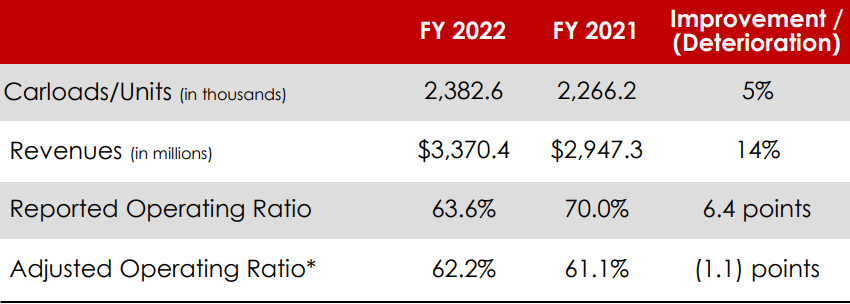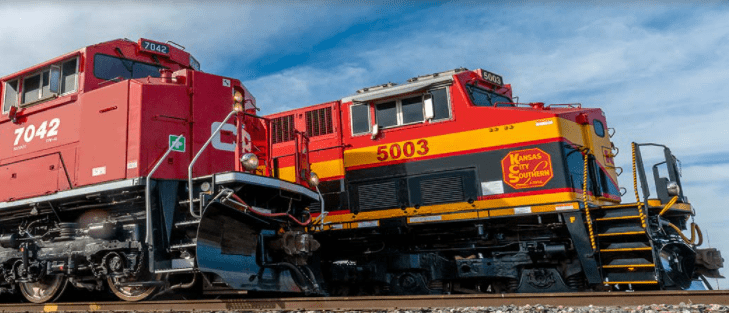Kansas City Southern (KCS) reduced at a year-over-year rate of 8% its Chemicals and Petroleum revenue in 2022, to $783.5 million.
Thus, revenue decreased $68.3 million in the year ended Dec. 31, 2022, compared to 2021, due to a 13% decline in volumes per railcar/unit, partially offset by a 6% increase in revenue per railcar/unit.
According to the company, volumes declined as shipments of refined fuel products to Mexico were negatively impacted by supply chain disruptions as a result of increased regulation.
Financial results of KCS
This commodity group includes products such as chemicals, plastics, petroleum, liquefied petroleum gas and refined petroleum products, such as gasoline and diesel fuel.
KCS transports these products through its network and through interchanges with other rail carriers.
While the refined fuels and liquefied petroleum gas product groups primarily supply Mexican demand, chemicals and plastics products are used in the automotive, housing and packaging industries, as well as in general manufacturing.
KCS transports petroleum products through its network and as U.S. oil refineries have continued to increase their refining capacity, they have coordinated with KCS to develop additional long-term storage opportunities to complement a seamless rail freight operation.
Kansas City Southern
The company is engaged in the freight rail transportation business operating through a single coordinated rail network under one reportable business segment.
KCS generates revenues and cash flows by providing its customers with freight delivery services both within its regions and throughout North America through connections with other Class I rail carriers.
KCS’ customers operate in a variety of industries, including electric generation utilities, chemical and petroleum products, paper and forest products, agricultural and mineral products, automotive products and intermodal transportation.
Revenues include revenue for transportation services and fuel surcharges. For the year ended December 31, 2022, revenues increased 14% due to an increase in revenue per carload/unit of 9% and an increase in carloads/unit volumes of 5%, respectively, compared to 2021.
For the year ended December 31, 2022, revenue per carload/unit increased by 9%, compared to the prior year, due to higher fuel surcharge, positive pricing impacts, and longer average length of haul, partially offset by mix.
![]()

